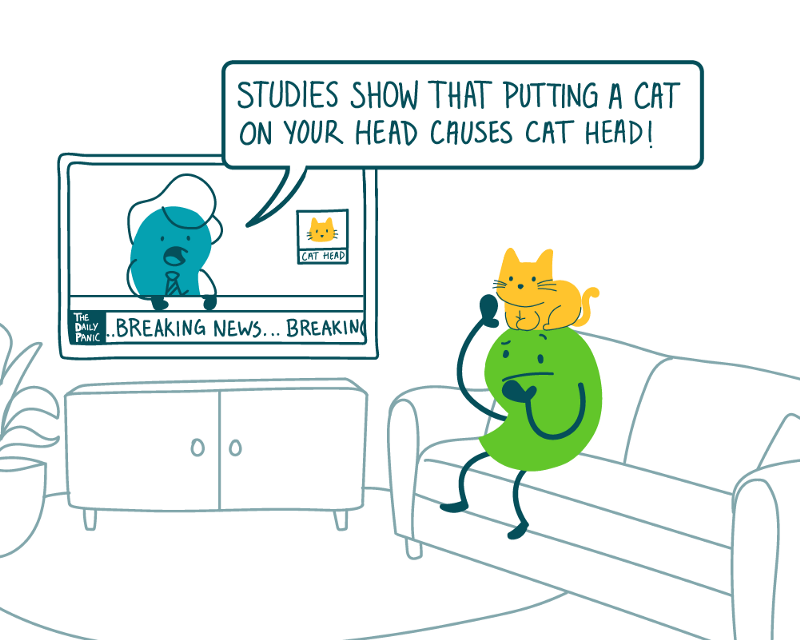
Here at We ❤ Health Literacy Headquarters, we love to back up our health advice with solid research. And that means we’re always on guard against mistaking correlation for causation.
Of course, as health communicators, we like to think we can spot the difference a mile away. But let’s be honest: it’s easy — and even tempting — to conflate them. Spend enough time mining a broad data set, and you’ll see all sorts of tantalizing correlations that are just too good to be true. Red wine linked to heart health! Chocolate associated with winning Nobel prizes! And before you know it, you’re trying to guzzle and munch your way to a tip-top ticker and a major academic award.
Let’s start with a quick refresher of the difference between causation and correlation:
- Causation means we know that X causes Y to happen. In health research, demonstrating causation is a pretty big deal.
- Correlation means there’s a relationship between 2 things, but we don’t know what kind. Is X causing Y? Is Y causing X? Is there a sneaky Z factor waiting in the wings to muck up the whole equation?!
Before we move on, it’s important to keep in mind that showing causation can look different depending on what researchers are studying. The gold standard here is a randomized controlled trial, but those aren’t always possible. Take smoking and lung cancer — asking an experimental group to smoke so we can see if they get cancer would be wildly unethical! And yet, we know that smoking causes lung cancer. Because at the end of the day, overwhelming observational evidence can get us to what’s called causal inference. (Especially astute readers will notice this is part of what tripped us up in our first attempt at tackling this topic.)
Now, there are 2 main things to keep in mind when you’re writing about cause and effect in health materials. First, check the original source. Online news is notoriously click-baity when it comes to reporting the latest health-related studies. So don’t take someone else’s word for it! Instead, look at the original study and other sources to confirm whether experts agree that it’s cause and effect.
This may well send you down an internet rabbit hole here and there, but it’s well worth it to make sure you’re not accidentally leading your dear readers astray, dear readers. (And this type of dutiful sleuthing can also help you avoid falling prey to pseudoscience.)
And once you’re sure you know what you’re working with, choose your words carefully.
- If you’re writing about causation, knock yourself out with strong verbs like “X causes Y.”
- If you’re writing about correlation, try something like “X may help lower the risk of Y” or “X is linked to Y.” (Don’t be alarmed — we know it’s passive voice. But every once in a while, the dreaded passive can serve a purpose.)
And while you’re at it, be upfront about any uncertainty. It’s better to tell your readers that experts just aren’t sure than to have to pull a U-turn in your health advice later on.
The bottom line: When writing about cause and effect in health materials, keep the distinction between correlation and causation in mind.
Browse recent posts